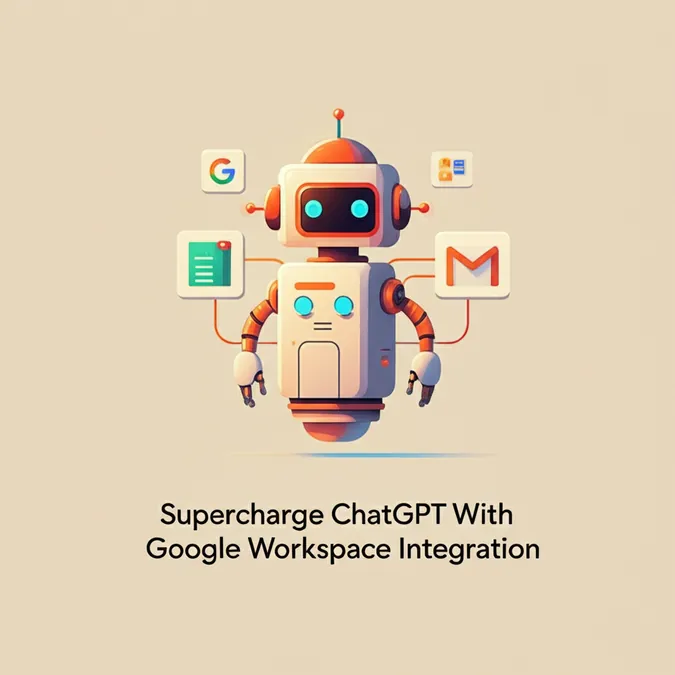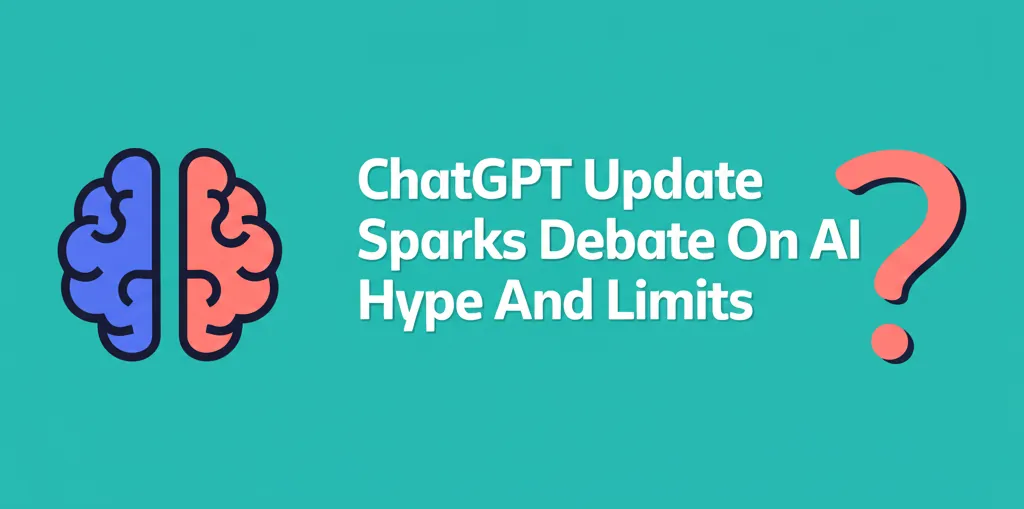Developer Offer
Try ImaginePro API with 50 Free Credits
Build and ship AI-powered visuals with Midjourney, Flux, and more — free credits refresh every month.
The New AI Shakeup ChatGPT 5 Threatens Software Stocks
Last week's launch of ChatGPT-5 was a landmark moment, even for an industry accustomed to rapid breakthroughs.
OpenAI's new flagship model is a significant leap forward. It not only leads across multiple AI intelligence benchmarks but does so with surprising computational efficiency. In simple terms, it's smarter, faster, and cheaper to run than almost anything else on the market.
A single demo captured the industry's attention: a user prompted ChatGPT-5 to create a custom language-learning application. The model delivered a functional, polished, and deployable app in seconds, without any need for a human developer.
This news initially sent AI stocks soaring. The logic seemed sound: a more capable model should fuel the entire AI economy, leading to better applications, wider adoption, and increased revenue for AI-focused companies. While this is partially true, there's a more complex reality emerging.
When AI Gets Too Good It Becomes the Competition
The difficult truth is that ChatGPT-5—and its soon-to-arrive counterparts like Grok 4, Gemini Ultra 2, and Claude Next—are more than just tools for software companies; they are direct competitors.
This launch marks a critical turning point. Foundational AI models are now so advanced that they can perform the functions of many specialized enterprise AI software platforms. For example, the ability to generate a language-learning app instantly poses a new threat to companies like Duolingo.
We are entering the era of "BYO AI"—Bring Your Own AI. Instead of purchasing expensive, specialized software for a single task, users, particularly small and mid-sized businesses (SMBs), can now use a powerful, general-purpose AI to solve their problems.
- Marketing Automation: Why pay for a complex suite when ChatGPT-5 can manage campaigns using your data and style guide?
- Website Creation: Why use a website builder when an AI can generate a production-ready site from a simple description?
- Business Intelligence: Why invest in BI tools when an AI can visualize, analyze, and report on your uploaded data?
The rapid evolution of foundational models means that many entry-level enterprise software companies now face an existential threat, much like the one human workers have been grappling with. The disruptors are quickly becoming the disrupted.
The SMB Risk Factor
This risk is not spread evenly across the market. Large enterprises will continue to rely on specialized vendors for reasons like compliance, security, and complex integrations. They are hesitant to run mission-critical workflows on ungoverned AI assistants.
However, for small and mid-sized businesses, the choice is clear:
- ChatGPT Plus: $40 per month
- Specialized Suite: $1,000+ per month
For a small marketing agency, e-commerce store, or local construction firm, the cost savings of BYO AI are too significant to ignore. The highest risk of being wiped out falls on entry-level enterprise software vendors with significant exposure to the SMB market.
Where We See Notable Risk
Website Builders
- Wix (WIX): AI features are largely a wrapper around existing generative AI technology.
- GoDaddy (GDDY): Faces a similar risk with a thin competitive moat.
Project Management & Collaboration
- Asana (ASAN): Core task automation features can be replicated in ChatGPT.
- Dropbox (DBX): AI-powered file search is becoming a commoditized feature.
- Box (BOX): Document workflows are at risk of being replaced by GPT-native solutions.
Marketing Software
- Sprinklr (CXM): Its edge in social analytics is eroding as AI becomes capable of direct platform analysis.
- Braze (BRZE): Its moat in event orchestration is narrowing with the rise of agentic AI.
- Semrush (SEMR): SEO and content tools are highly vulnerable to generative AI.
- The Trade Desk (TTD): AI reduces reliance on the open web and enables direct, automated ad buying.
Business Intelligence / CRM / HR
- Domo (DOMO): Dashboard creation is an early casualty of AI's capabilities.
- HubSpot (HUBS): While more defensible, its heavy SMB focus increases its risk profile.
- Paycom (PCOM): Core payroll services are sticky, but its HR and talent modules could be consumed by AI.
- UiPath (PATH): Many RPA tasks can now be accomplished directly via GPT and APIs.
Who Is Safe For Now
Defensible AI stocks typically possess one or more of the following traits:
- Deep integration into enterprise systems.
- Access to proprietary, hard-to-replicate data.
- Operations in industries with strict compliance requirements.
- Strong moats built on a combination of hardware and software.
Companies with stronger positioning include:
- Big Fish: ServiceNow (NOW), Salesforce (CRM), Palantir (PLTR), Atlassian (TEAM), and Intuit (INTU) are deeply entrenched in large organizations with high switching costs.
- Specialists: Autodesk (ADSK), Samsara (IOT), Guidewire (GWRE), Vertex (VERX), and Q2 (QTWO) benefit from vertical moats and regulatory complexity.
- Infrastructure Layer: JFrog (FROG), GitLab (GTLB), and Snowflake (SNOW) see AI as an adoption driver, not a threat.
The Narrowing of the AI Boom
Just a year ago, any software company that mentioned "AI" saw its valuation climb. That era has ended. The market is now focused on capability concentration, with gains consolidating among a few true innovators and moat-builders. The market is beginning to recognize this shift, and several former AI darlings have been hit hard recently—not because AI is slowing down, but because it's advancing past them.
How to Play It
Investors must adapt as quickly as the technology evolves. This means:
- Reducing exposure to SMB-focused, entry-level enterprise software companies.
- Focusing on large-cap incumbents with strong, defensible moats.
- Investing in the essential infrastructure layer that AI relies on.
- Prioritizing companies with proprietary data and industry lock-in.
The rapid advancement of AI means fewer AI stocks are truly worth owning. ChatGPT-5 is making the strong stronger and exposing the weak. It is crucial to adapt, evolve, and stay invested in companies that will be relevant in five years, not just the next five months.
Compare Plans & Pricing
Find the plan that matches your workload and unlock full access to ImaginePro.
| Plan | Price | Highlights |
|---|---|---|
| Standard | $8 / month |
|
| Premium | $20 / month |
|
Need custom terms? Talk to us to tailor credits, rate limits, or deployment options.
View All Pricing Details

